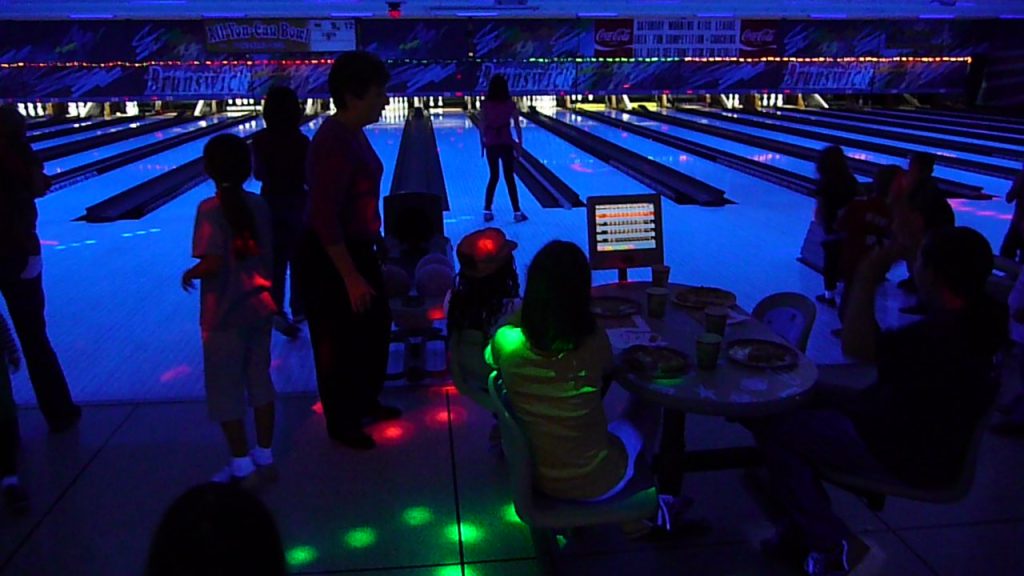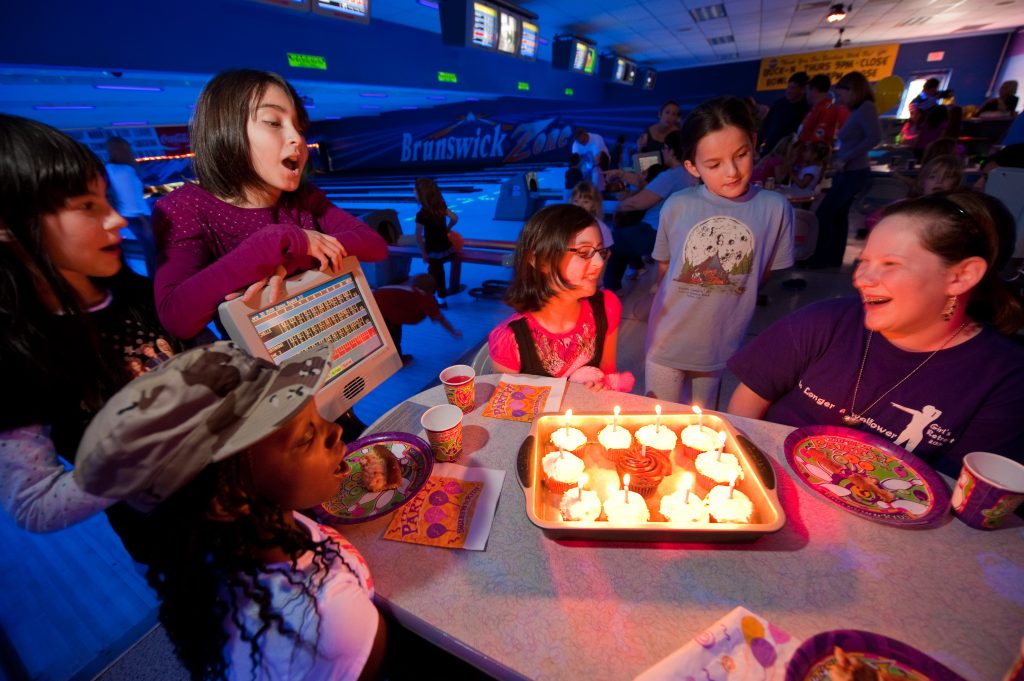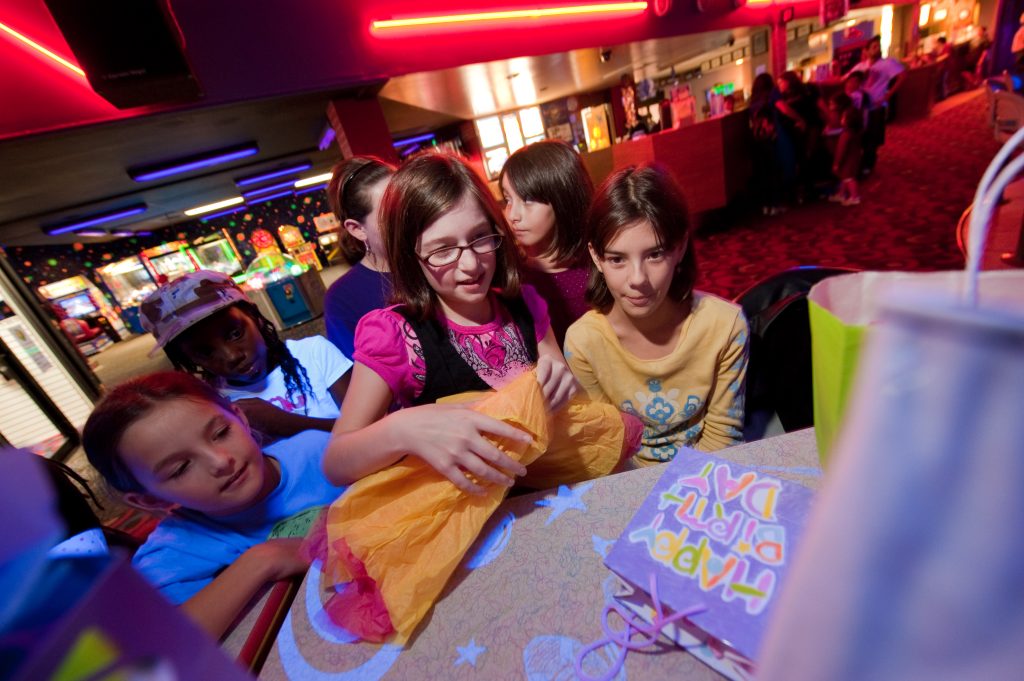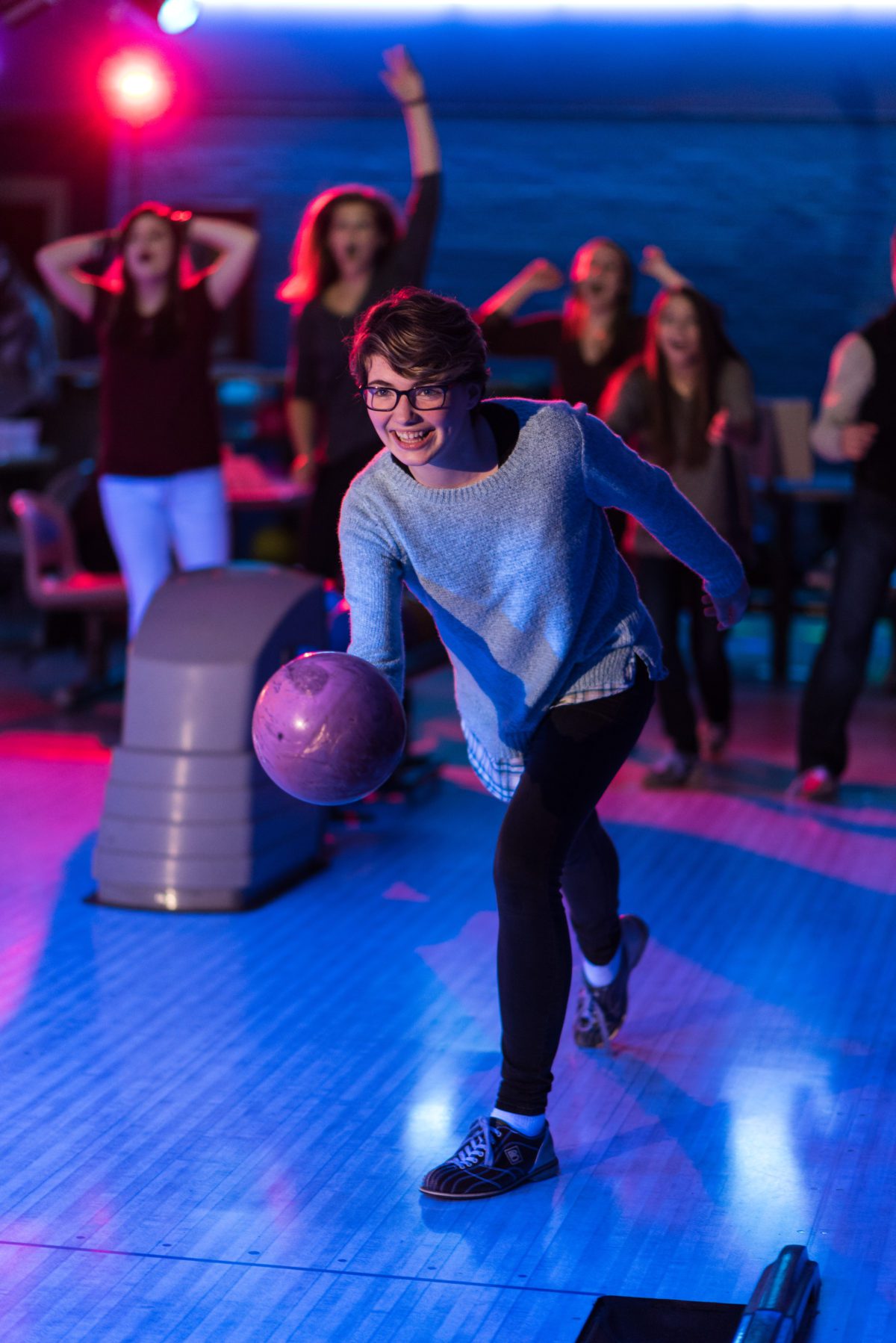
Here is a photo I took of bowling with a point-and-shoot Panasonic DMC-TZ5. I love the camera, and it has a great Zeiss lens. ISO limit up to about 1600.
It is the type of photo most people will get at the bowling alley during cosmic bowling without a flash.

I shot this of my daughter bowling a few years ago with the Nikon 14-24mm lens at 14mm. The Flash and I are close to my daughter’s bowling. The flash is about 45º to my left. I panned, and the shutter was dragging.
I set the camera on Aperture priority and the flash to slow sync to pick up on all the ambient light. The panning action created the streaks you see across the image.

Because the flash is so close to the subject and exposure is set by TTL [Through The Lens] metering, it shuts off and winks a light. The camera shutter remains open, picking up the available light in the background so it doesn’t go black.

The cool thing about using Slow Sync on the flash is I am capturing the room’s atmosphere, and the flash is putting light on the subject’s face. Look at that first photo here; they would be a silhouette without the flash.
My suggestion is that you try this with your friends. Go to a Cosmic Bowling Night and have some fun. I can tell you will enjoy the images for years to come.
More off-camera flash posts:
Storyteller: Off–Camera Flash Solution for the Fuji X-E2
Apr 05, 2014
I prefer the off-camera flash any day to the pop-up flash on any camera. I have written many articles on it here on the blog. Just put the phrase “off-camera” in my search field on the blog, and you will see many posts …
Storyteller: TTL Nikon Off-Camera Flash Kit
Jul 05, 2013
Here is a list of what I recommend for those wanting to use the Nikon TTL system for off-camera flash and the PocketWizard radio system to fire the flashes. Of course, you can substitute another Nikon TTL or off-brand if you wish to.
Storyteller: Better bird feeder pictures with off-camera flash
Jul 14, 2014
Exposing to the subject can often blow out the background. The solution is to add a flash, but I didn’t want an on-camera flash for a few reasons. First, having it on the camera and shooting through the glass would create a glare.
When you travel with Super Stars, you need an off-camera flash
Jul 09, 2014
Without the flashes, the cows would have been somewhat silhouetted, and by adding the off-camera flash, I was able to keep the color temperature in the daylight and then also keep them bright enough to keep the rich colors
Storyteller: Off-Camera Flash Examples
Apr 14, 2012
By combining off-camera flash and having people moving, I get two great results; great expressions and good color. The first thing I started with on the assignment was a group photo, but the best results as far as
Storyteller: Off-camera flash and gels for the sky
Feb 25, 2013
Here is how to use off-camera flash and gels to change the look of the sky. When I get this kind of situation on a cloudy day in Kona, Hawaii, sometimes I fix it with flash. Using an off-camera flash, I set the flash to be 2-stops over the available light and the
s for Off-Camera Flash for +/- exposure problems
Apr 10, 2012
When I first wrote about doing off-camera flash, I realized I needed to return to this and highlight some points. ISO, Shutter Speed, Aperture, and +/- Some things will affect your getting proper exposure.
f 3
May 21, 2011
Three things make me choose my Nikon Speedlights over the manual flash: 1) I have no sync speed limitations, 2) I am quick—I don’t have to pause to take readings and then set the camera, and 3) I can shoot at very
ller: Super simple Off-Camera flash portrait
Jul 06, 2012
You can trigger the off-camera flash in many different ways. I often use the Nikon SU-800, which uses infrared to activate the off-camera flash. I used the PocketWizard Mini TT1 on the camera with the AC3, which lets me …
sh for beach portraits
Jul 05, 2012
I also used my Gitzo carbon fiber tripod to keep the camera rock steady and shoot these at dusk. This way, everyone’s eyes were open and not squinting on the beach. To trigger the flashes, I had the PocketWizard Mini

